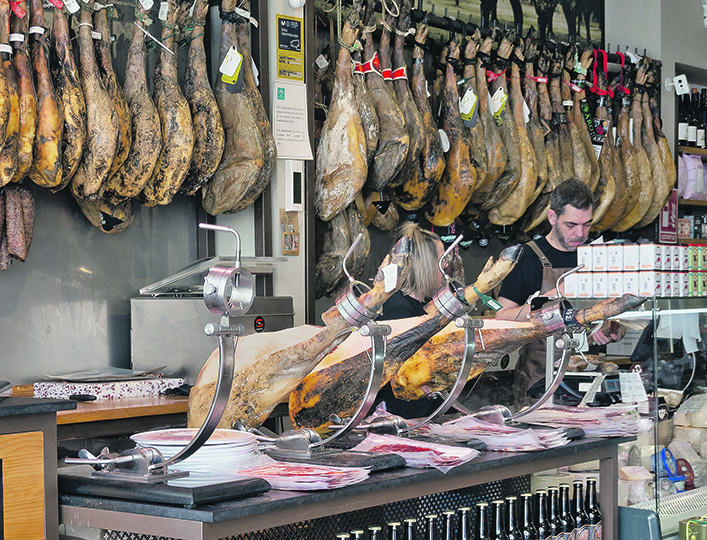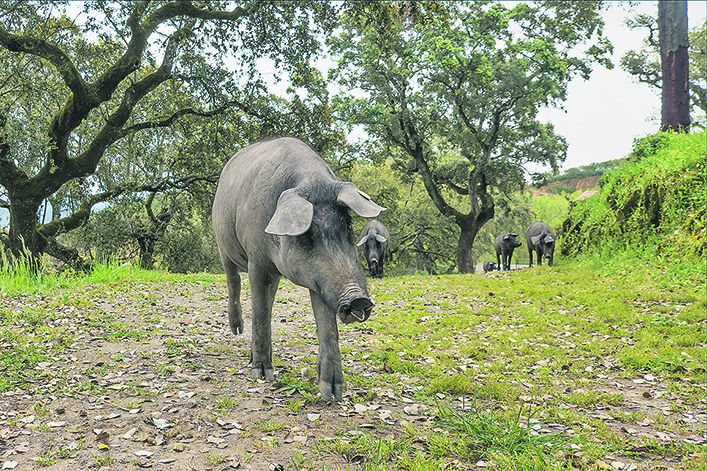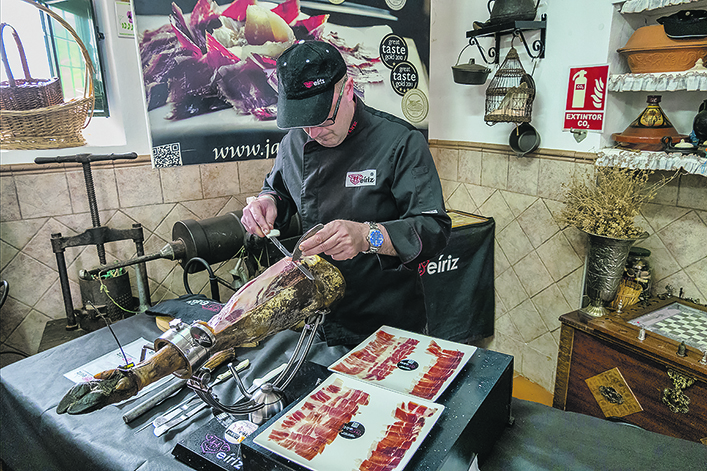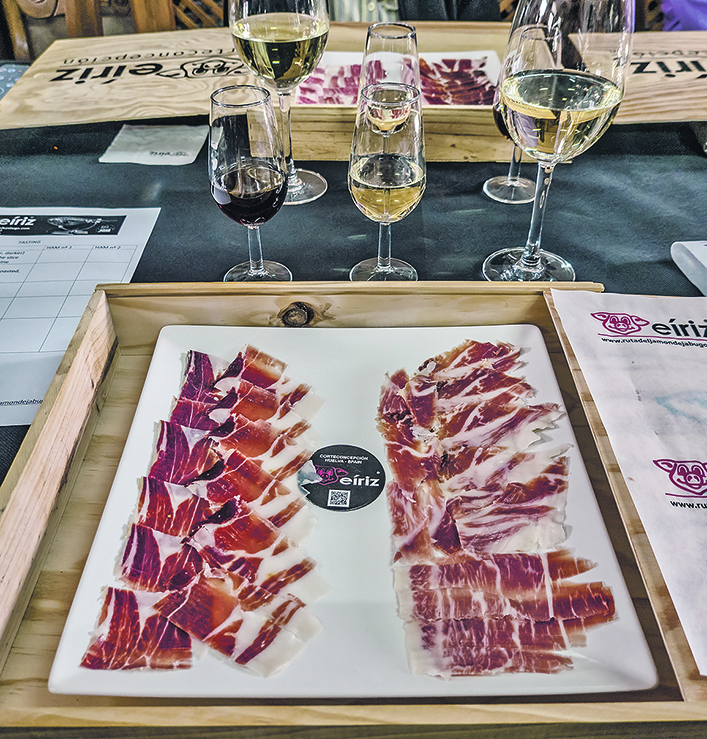Europe is famous for its cured hams, such as prosciutto from Italy or serrano from parts of Spain.
But for serious ham aficionados, the cream of the crop is Iberian ham from southwestern Spain. And the best of the best is 100 per cent Jamón Ibérico de Bellota — ham from acorn-fed Iberian pigs.
Ham isn’t simply ham, but the complexities were put into perspective during our visit to Jamónes Eíriz, a farm and ham processing facility in Huelva province in Spain’s southwestern corner. Here visitors can tour the entire operation from pig to plate.
In the family for 200 years, the operation is now run by Domingo Eíriz and his brother Gerardo. The tightly regulated industry has stringent conditions that must be met before the products can be certified 100 per cent Jamón Ibérico de Bellota, which fetches the top price.

First is the breed of pigs and their living conditions. We accompanied Domingo Eíriz into the forest pasture where the pigs live. After a quick call from Eíriz, a small group of pure-bred black Iberian pigs came running to meet us. The free-ranging pigs must have a minimum of one hectare per animal.
During the acorn-producing season, the pigs consume almost exclusively acorns from the many oak trees. They also forage for olives that have fallen from trees, grass, and anything else they find on the forest floor.
At this time of year, the pigs can gain up to a kilogram per day. When acorns aren’t available, the pigs are fed grain, but just enough to maintain their weight. The goal is to have almost all of the weight gain from eating acorns, which gives the ham its distinctive flavour.
The farm doesn’t raise enough pigs for the processing plant so they also obtain some from other area farms that meet the same standards.

The industry has a “denomination of origin” in much the same way as wine producers identify where the product comes from.
The Eíriz farm is in the highly rated Jabugo region. So, if the ham comes from acorn-fed purebred Iberian pigs, and is from Jabugo, it has a reputation as among the best in the world.
It’s a business that requires a lot of patience. After the pigs are butchered at two years old, it’s another three years before the hams are sold. We donned protective clothing for a tour of the drying facilities where the hams, along with other products such as shoulder cuts and sausages, hang in climate-controlled curing rooms.
Some farms cross Iberian pigs with Duroc pigs, feed more grain, or have a higher density of animals. They can still produce a good quality ham but can’t claim the same designations or demand as high a price.
Eíriz refers to the difference in approach as “production versus passion.” They pride themselves on producing the best possible ham, and have a long list of awards to show for it. It also helps that the top quality ham can sell for more than double the lesser qualities.

Is the extra price worth it? In the tasting room after the tour, we sampled different products. There was no doubt that the 100 per cent Jamón Ibérico de Bellota stood out — dark red and heavily marbled with fat. It practically melts in your mouth, with a nutty, almost sweet taste.
Eíriz demonstrated how they carve the ham, always paper thin. A special knife is used, thin and flexible, somewhat like a fish filleting knife.
While the ham is expensive, people don’t eat slabs of it but rather a few thin pieces at a time that don’t add up to a lot of weight. It is often served as an appetizer, and Eíriz recommends drinking a fruity white wine with it.
We asked him about the amount of fat and the warnings we hear about not eating too much fatty or salty food.

“During the three years of aging, it only sits in salt for seven to 10 days, then we wash it off. When we eat it there isn’t a lot of salt left,” he explained, adding that “fat is an absolutely essential part of the product.”
Not only does the pigs’ acorn diet add to the taste of the meat, but it also means they absorb oleic acid, the same fatty acid found in olive oil that has several health benefits.
A bonus was discovering that this special treat is actually good for you.
Arlene and Robin Karpan are well-travelled writers based in Saskatoon. Contact: travel@producer.com.


















